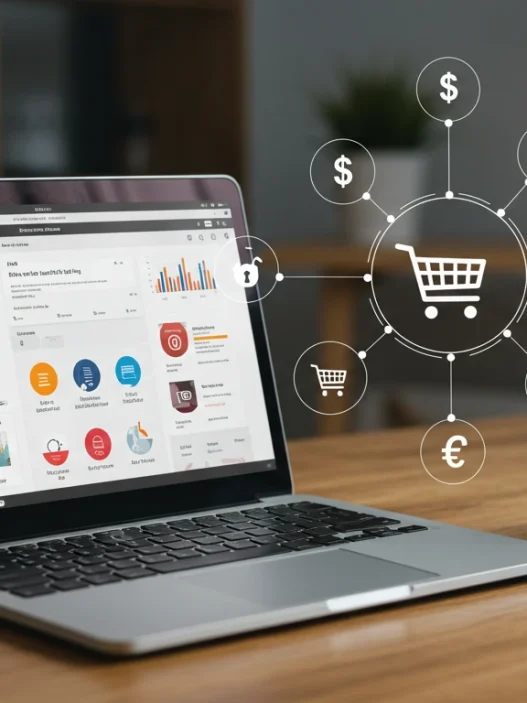Have you ever wondered why some brands dominate social media while others struggle to get noticed? The secret isn’t luck—it’s a well-planned social media strategy. Whether you’re a business owner, marketer, or influencer, understanding how to create and execute a strong strategy can set you apart.
Social media is more than just posting content. It’s about engaging with your audience, building relationships, and driving results. In this guide, you’ll learn how to craft a successful social media strategy step by step.
Table of Contents
1. Understanding Social Media Strategy
What is a Social Media Strategy?
A social media strategy is a structured plan that defines how a brand, business, or individual will use social media to achieve specific goals. It includes choosing the right platforms, creating engaging content, and measuring success.
Why is it Important?
A solid strategy helps you:
- Increase brand awareness
- Engage with your target audience
- Drive traffic to your website
- Generate leads and sales
- Build customer loyalty
Key Entities in Social Media Strategy
- Social Media Platforms: Facebook, Instagram, LinkedIn, Twitter, TikTok, YouTube
- Metrics & KPIs: Engagement rate, reach, impressions, conversions
- Content Types: Video, images, blogs, infographics, live streams
- Tools & Analytics: Google Analytics, Hootsuite, Buffer, Sprout Social

2. Setting Clear Goals
How to Set SMART Goals
Your social media goals should follow the SMART framework:
- Specific: Define clear objectives (e.g., Increase Instagram followers by 20%)
- Measurable: Use KPIs to track progress
- Achievable: Set realistic goals based on resources
- Relevant: Align goals with business objectives
- Time-bound: Set a deadline for achieving them
Examples of Social Media Goals
- Increase brand awareness by growing followers by 30% in 6 months
- Generate 500 leads per month through LinkedIn ads
- Improve customer engagement by boosting response rate to 90%

3. Understanding Your Target Audience
Who is Your Ideal Audience?
Your strategy will only work if you understand who you’re targeting. Identify:
- Demographics (Age, Gender, Location, Income)
- Interests & Behaviors (Hobbies, Online Activities, Shopping Habits)
- Pain Points (What problems does your audience face?)
How to Research Your Audience
- Social Media Analytics: Check insights on Instagram, Facebook, LinkedIn, etc.
- Surveys & Polls: Ask your audience about their preferences
- Competitor Analysis: See who interacts with your competitors’ posts
- Google Trends & Keyword Research: Identify trending topics in your industry
Using Buyer Personas
A buyer persona is a detailed profile of your ideal customer. Example:
- Name: Sarah, 28, Digital Marketer
- Interests: Social media, branding, growth hacking
- Challenges: Finding the right tools, increasing engagement
4. Choosing the Right Platforms
How to Pick the Best Social Media Channels
Not every platform is right for your brand. Choose based on:
- Target Audience: Where do they spend time?
- Content Type: Do you create videos, images, or long-form content?
- Business Goals: B2B brands thrive on LinkedIn while fashion brands shine on Instagram.
Platform Breakdown
| Platform | Best For | User Demographics |
|---|---|---|
| Community engagement, Ads | Broad audience (25-55) | |
| Visual content, Influencers | Younger audience (18-34) | |
| B2B marketing, Networking | Professionals (25-50) | |
| Real-time updates, Trends | News & tech audience | |
| TikTok | Short-form video, Viral content | Gen Z, Young Millennials |
| YouTube | Video marketing, Tutorials | Wide age range |

5. Content Creation & Scheduling
Creating High-Quality Content
Your content should:
- Be valuable: Educate, entertain, or inspire
- Be consistent: Follow a posting schedule
- Encourage interaction: Ask questions, start discussions
Types of Social Media Content
- Videos: Tutorials, behind-the-scenes, product demos
- Images: Infographics, memes, branded photos
- Stories & Reels: Short, engaging clips for Instagram & Facebook
- Live Streams: Webinars, Q&A sessions
- Text-based posts: Tips, industry insights, engaging captions
Scheduling & Automation
Use tools like Hootsuite, Buffer, or Sprout Social to plan posts in advance. A good posting schedule:
- Instagram & Facebook: 3-5 times per week
- Twitter: 5-10 times per day
- LinkedIn: 2-3 times per week
Conclusion
A strong social media strategy is more than just posting content. It involves setting clear goals, understanding your audience, choosing the right platforms, and creating engaging content. With a well-planned approach, you can build brand awareness, grow your audience, and drive real business results.
Stay tuned for the next part of this guide, where we’ll cover engagement strategies, paid vs. organic social media, influencer marketing, and more!
Frequently Asked Questions
1. How do I start a social media strategy?
Begin by setting goals, researching your audience, and choosing the best platforms for your brand.
2. How often should I post on social media?
Posting frequency depends on the platform. For Instagram, 3-5 times a week is ideal, while Twitter requires multiple posts daily.
3. How can I increase engagement on social media?
Encourage interaction by asking questions, using polls, responding to comments, and posting interactive content like stories and live videos.
4. Should I focus on organic or paid social media?
A mix of both works best. Organic content builds trust, while paid ads help reach a broader audience quickly.
5. What tools can help me manage social media?
Hootsuite, Buffer, and Sprout Social are excellent tools for scheduling and analytics



















